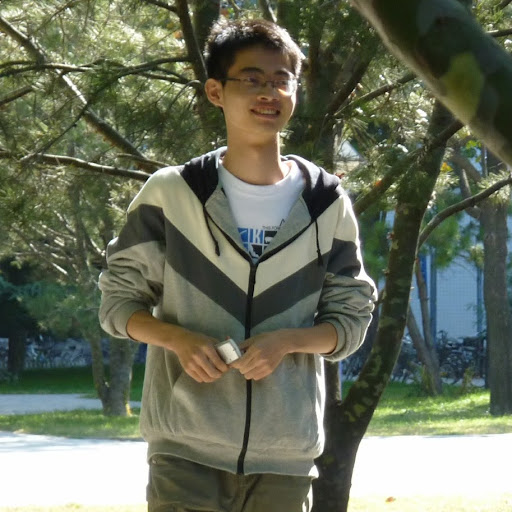Hui Ling Huang
age ~49
from Issaquah, WA
- Also known as:
-
- Huiling Ling Huang
- Hui Chun Huang
- Hui Yun Huang
- Lilian H H Wang
- Lilian H Huang
- Lilian H Wang
- Huiling Ling Huanghui
Hui Huang Phones & Addresses
- Issaquah, WA
- 1212 Nuuanu Ave, Honolulu, HI 96817 • 8085237087 • 8085331591 • 8085347090
- 1541 Kalakaua Ave, Honolulu, HI 96826 • 8089467546
- 1925 Kalakaua Ave, Honolulu, HI 96815 • 8089515377
- Orlando, FL
- Springfield, MO
- Kiona, WA
Medicine Doctors

Hui L. Huang
view sourceSpecialties:
Internal Medicine
Work:
Montefiore Medical GroupMontefiore Medical Group Urgent Care
2532 Grand Concourse, Bronx, NY 10458
7189601500 (phone), 7189601501 (fax)
2532 Grand Concourse, Bronx, NY 10458
7189601500 (phone), 7189601501 (fax)
Education:
Medical School
Albert Einstein College of Medicine at Yeshiva University
Graduated: 1982
Albert Einstein College of Medicine at Yeshiva University
Graduated: 1982
Procedures:
Arthrocentesis
Electrocardiogram (EKG or ECG)
Pulmonary Function Tests
Vaccine Administration
Electrocardiogram (EKG or ECG)
Pulmonary Function Tests
Vaccine Administration
Conditions:
Abdominal Hernia
Abnormal Vaginal Bleeding
Allergic Rhinitis
Breast Disorders
Chronic Sinusitis
Abnormal Vaginal Bleeding
Allergic Rhinitis
Breast Disorders
Chronic Sinusitis
Languages:
English
Spanish
Spanish
Description:
Dr. Huang graduated from the Albert Einstein College of Medicine at Yeshiva University in 1982. She works in Bronx, NY and specializes in Internal Medicine. Dr. Huang is affiliated with Montefiore Medical Center.

Hui Huang
view sourceSpecialties:
Hematology/Oncology
Work:
Kaiser Permanente Medical GroupKaiser Permanente Medical Center
1 Quality Dr, Vacaville, CA 95688
7076244000 (phone), 7076242051 (fax)
1 Quality Dr, Vacaville, CA 95688
7076244000 (phone), 7076242051 (fax)
Procedures:
Chemotherapy
Conditions:
HIV Infection
Leukemia
Lung Cancer
Malignant Neoplasm of Female Breast
Multiple Myeloma
Leukemia
Lung Cancer
Malignant Neoplasm of Female Breast
Multiple Myeloma
Languages:
English
Description:
Dr. Huang works in Vacaville, CA and specializes in Hematology/Oncology. Dr. Huang is affiliated with Kaiser Permanente Medical Center - Roseville.

Hui Ling Huang
view sourceSpecialties:
Internal Medicine
Work:
China Town Service Center
767 N Hl St STE 200B, Los Angeles, CA 90012
2138081778 (phone), 2136809427 (fax)
767 N Hl St STE 200B, Los Angeles, CA 90012
2138081778 (phone), 2136809427 (fax)
Languages:
Chinese
English
Spanish
Vietnamese
English
Spanish
Vietnamese
Description:
Ms. Huang works in Los Angeles, CA and specializes in Internal Medicine.

Hui H Huang
view sourceSpecialties:
Internal Medicine
Hematology
Medical Oncology
Hematology & Oncology
Hematology
Medical Oncology
Hematology & Oncology
Education:
Shanghai Medical University (1991)
Name / Title
Company / Classification
Phones & Addresses
Vanfo United Enterprises
Recycling Services
Recycling Services
2428 W 13 Ave, Vancouver, BC V6K 2S8
6047168618
6047168618
Director, Vice President
Sinocoking Coal and Coke Chemical Industries, Inc
Vanfo United Enterprises
Recycling Services
Recycling Services
6047168618
HONGLI CLEAN ENERGY TECHNOLOGIES CORP
Applicant
Huang Corporation
Us Patents
-
Multi-Phase Storage Volume Transformation
view source -
US Patent:8595493, Nov 26, 2013
-
Filed:Apr 13, 2010
-
Appl. No.:12/759406
-
Inventors:Octavian T. Ureche - Renton WA, US
Alex M. Semenko - Issaquah WA, US
Hui Huang - Redmond WA, US -
Assignee:Microsoft Corporation - Redmond WA
-
International Classification:H04L 9/32
-
US Classification:713168, 713190, 713193
-
Abstract:In accordance with one or more aspects, a storage volume is transformed into an encrypted storage volume or an unencrypted storage volume using a multi-phase process. One or more parts of the storage volume that have not yet been transformed are identified, and one or more parts of the storage volume that are allocated for use are identified. In a first phase of the multi-phase process, one or more parts of the storage volume that have not yet been transformed and that are allocated for use are transformed. In a second phase of the multi-phase process, after the first phase is finished, one or more parts of the storage volume that have not yet been transformed and are not allocated for use are transformed.
-
Application Lifetime Management
view source -
US Patent:8635630, Jan 21, 2014
-
Filed:Oct 25, 2010
-
Appl. No.:12/911450
-
Inventors:Anand B. Iyer - Sammamish WA, US
Michael H. Krause - Redmond WA, US
Haseeb Ahmed - Redmond WA, US
Yunfei Shang - Bothell WA, US
Kumneger T. Zelalem - Bellevue WA, US
Zinaida A. Pozen - Seattle WA, US
Hui Huang - Redmond WA, US
Yau N. Chin - Bellevue WA, US -
Assignee:Microsoft Corporation - Redmond WA
-
International Classification:G06F 9/22
-
US Classification:719318, 718103, 718104, 710110
-
Abstract:In a computing device running multiple applications, a check is made as to whether a threshold value of multiple threshold values has been met. Each of the multiple threshold values is associated with a characteristic of one of the multiple applications or a characteristic of a resource of the computing device. If the threshold value has not been met, then the multiple applications are allowed to continue running on the computing device. However, if the threshold value has been met, then one or more of the multiple applications to shut down is selected based at least in part on the characteristic associated with the threshold value that has been met, and the selected application is shut down.
-
Guidance And Navigation Control Proteins And Method Of Making And Using Thereof
view source -
US Patent:20210024630, Jan 28, 2021
-
Filed:Mar 26, 2019
-
Appl. No.:17/040513
-
Inventors:- Redmond WA, US
- Chengdu, Sichuan, CN
Dong XIA - Redmond WA, US
David JELLYMAN - Duvall WA, US
Katrina BYKOVA - Seattle WA, US
Anne-Marie ROUSSEAU - Seattle WA, US
Bill BRADY - Bothell WA, US
Blair RENSHAW - Renton WA, US
Brian KOVACEVICH - Snohomish WA, US
Yu LIANG - Redmond WA, US
Camilla WANG - Sammamish WA, US
Zeren GAO - Redmond WA, US
Hui Huang - Redmond WA, US -
International Classification:C07K 16/28
A61P 35/02
C12N 5/0783
C12N 5/09 -
Abstract:The application provides guidance and navigation control (GNC) proteins. In one embodiment, the guidance and navigation control (GNC) protein, comprising a binding domain for a T cell activating receptor, a binding domain for a tumor associated antigen, a bind domain for an immune checkpoint receptor, and a binding domain for a T cell co-stimulating receptor. The binding domain for the tumor associated antigen is not adjacent to the binding domain for the T cell co-stimulating receptor. In one embodiment, the binding domain for the T cell activating receptor is adjacent to the binding domain for the tumor associated antigen (TAA).
-
Methods Of Making And Using Guidance And Navigation Control Proteins
view source -
US Patent:20210008113, Jan 14, 2021
-
Filed:Mar 26, 2019
-
Appl. No.:17/040519
-
Inventors:- Redmond WA, US
- Chengdu, Sichuan, CN
Jahan KHALILI - Everett WA, US
Dong XIA - Redmond WA, US
David JELLYMAN - Duvall WA, US
Katrina BYKOVA - Seattle WA, US
Anne-Marie ROUSSEAU - Seattle WA, US
Camilla WANG - Sammamish WA, US
Zeren GAO - Redmond WA, US
Hui HUANG - Redmond WA, US
Steven K. LUNDY - Woodinville WA, US -
International Classification:A61K 35/17
C12N 5/0783
G01N 33/574
C07K 14/725
C07K 14/705
C07K 16/28
A61P 35/00 -
Abstract:The application provides methods for generating a therapeutic composition. The method includes the steps of providing a cell material comprising a cytotoxic cell, incubating the cell material with a first GNC protein to provide an activated cell composition, wherein the activated cell composition comprises a first therapeutic cell, and formulating the activated cell composition to provide a therapeutic composition, wherein the therapeutic composition is substantially free of exogenous viral and non-viral DNA or RNA. The first GNC protein comprises a first cytotoxic binding moiety and a first cancer targeting moiety, wherein the first cytotoxic binding moiety has a specificity to a first cytotoxic cell receptor and is configured to activate the first cytotoxic cell, and wherein the first cancer targeting moiety has a specificity to a first cancer cell receptor. The first therapeutic cell comprises the first GNC protein bound to the cytotoxic cell through the first cytotoxic cell receptor.
-
Identifying The Best Suitable Application To Open A File Shared Via A Link
view source -
US Patent:20190260836, Aug 22, 2019
-
Filed:Feb 21, 2018
-
Appl. No.:15/901817
-
Inventors:- Redmond WA, US
Daron SPEKTOR - Seattle WA, US
Hui HUANG - Bellevue WA, US
Jonathan Alexander BOCKELMAN - Kirkland WA, US
Peter EBERHARDY - Seattle WA, US
Alisa Yujin SO - Kirkland WA, US
Kevin Kaiwon LAM - Kirkland WA, US -
International Classification:H04L 29/08
-
Abstract:The techniques enable a device to identify a best suitable application to open a resource such as a file. The file can be shared via a link or can be attached to a communication. The link comprises a uniform resource locator (URL) or is in some way associated with an underlying URL. The URL includes a pattern, or a portion that identifies a domain (e.g., a hostname) and/or a portion that identifies a type of file that is to be accessed and opened. Upon activation of the link, the device analyzes the URL to determine the pattern. The device then obtains, from a service associated with the URL, a ranked list of applications that are authorized to open the file. Moreover, the device performs, at run-time, a negotiation with the service to determine which application is best suited to open the file.
-
External Sharing With Improved Security
view source -
US Patent:20180343243, Nov 29, 2018
-
Filed:May 24, 2017
-
Appl. No.:15/604084
-
Inventors:- Redmond WA, US
Greg S. FRIEDMAN - Redmond WA, US
Eugene S. LIN - Seattle WA, US
Sean Lamont Grant LIVINGSTON - Bothell WA, US
Hui HUANG - Bellevue WA, US
Gang ZHAI - Bellevue WA, US
Michael Scott PIERCE - Seattle WA, US
Sarat Chandra SUBRAMANIAM - Bellevue WA, US -
International Classification:H04L 29/06
G06F 21/62
H04L 12/58 -
Abstract:A computing system includes a processor and a data store coupled to the processor. The computing system is configured to provide access to electronic content stored in the data store. A user interface component is configured to receive an indication of an external user with which to share an item of electronic content. A link generation component is configured to generate a link to share the item of electronic content. An access control component is configured to receive a request to access the item of electronic content using the link, and responsively generate an access code that is communicated to a known endpoint associated with the link. The user interface component is configured to receive a user input containing a user-entered access input. The access control component is configured to selectively grant access to the item of electronic content based on whether the user-entered access input matched the access code communicated to the known endpoint associated with the link.
-
Persistent Mutable Sharing Of Electronic Content
view source -
US Patent:20180152460, May 31, 2018
-
Filed:Nov 28, 2016
-
Appl. No.:15/362155
-
Inventors:- Redmond WA, US
Robert G. Hawking - Seattle WA, US
Hui Huang - Bellevue WA, US
Sean L. G. Livingston - Bothell WA, US -
International Classification:H04L 29/06
H04L 29/12 -
Abstract:A computing system is configured to provide access to electronic content. The computing system includes a processor, a data store, an access control system, and a user interface component. The data store is coupled to the processor and is configured to store the electronic content. The access control system control system is configured to selectively allow a requestor to access the electronic content based on a stored metadata setting that is associated with the link. The user interface component is configured to receive a setting change related to a share associated with the link and to persist metadata associated with the setting change.
Lawyers & Attorneys

Hui Hui Huang - Lawyer
view sourceLicenses:
California - Active 2001
Education:
Golden Gate University School of Law

Hui Huang - Lawyer
view sourceOffice:
Latham & Watkins LLP
Specialties:
Media Entertainment
Technology Transactions
Litigation
Intellectual Property
Technology Transactions
Litigation
Intellectual Property
ISLN:
922151355
Admitted:
2010
University:
University of California, Los Angeles, B.S., 2006
Law School:
University of Pennsylvania Law School, J.D., 2010
Isbn (Books And Publications)

Das Rechtssystem Des Bankuberweisungsverkehrs in Der Vr China
view sourceAuthor
Hui Huang
ISBN #
3899492641

International Securities Markets: Insider Trading Law in China
view sourceAuthor
Hui Huang
ISBN #
9041125574
License Records
Hui En Huang
License #:
MA.002828 - Active
Issued Date:
Aug 14, 2014
Expiration Date:
Jun 10, 2017
Type:
Medication Administration (V)
Hui En Huang
License #:
PNT.047465 - Expired
Issued Date:
Jul 8, 2014
Expiration Date:
Sep 9, 2014
Type:
Pharmacy Intern
Hui En Huang
License #:
PST.020778 - Active
Issued Date:
Sep 9, 2014
Expiration Date:
Dec 31, 2017
Type:
Pharmacist
Hui Hua Huang
License #:
25938 - Expired
Issued Date:
Nov 7, 2007
Renew Date:
Nov 7, 2007
Expiration Date:
May 31, 2008
Type:
Certified Public Accountant
Googleplus

Hui Huang
Work:
IPV Capital - Investment Manager (2008)
Education:
Shanghai Jiao Tong University

Hui Huang

Hui Huang
Education:
Xiamen University - International Journalism

Hui Huang
Education:
CIT

Hui Huang

Hui Huang

Hui Huang

Hui Huang
Youtube
Classmates

Heald Business College, O...
view sourceGraduates:
Guo Hui Huang (1996-1997),
Gloria Wayenberg (1967-1969),
Sandra Fritschle (1993-1994),
Fernando Cubangbang (1990-1991),
Tamahtra Mcclure (1992-1994)
Gloria Wayenberg (1967-1969),
Sandra Fritschle (1993-1994),
Fernando Cubangbang (1990-1991),
Tamahtra Mcclure (1992-1994)

Peng Hui Huang
view source
Hui Zhen Huang
view source
Hui Juan Huang
view source
Hui Juan Huang
view source
Hui Ling Huang
view source
Hui Hua Huang
view source
Kee Hui Huang
view source
Hsiu Hui Huang
view sourceFlickr
Get Report for Hui Ling Huang from Issaquah, WA, age ~49




















